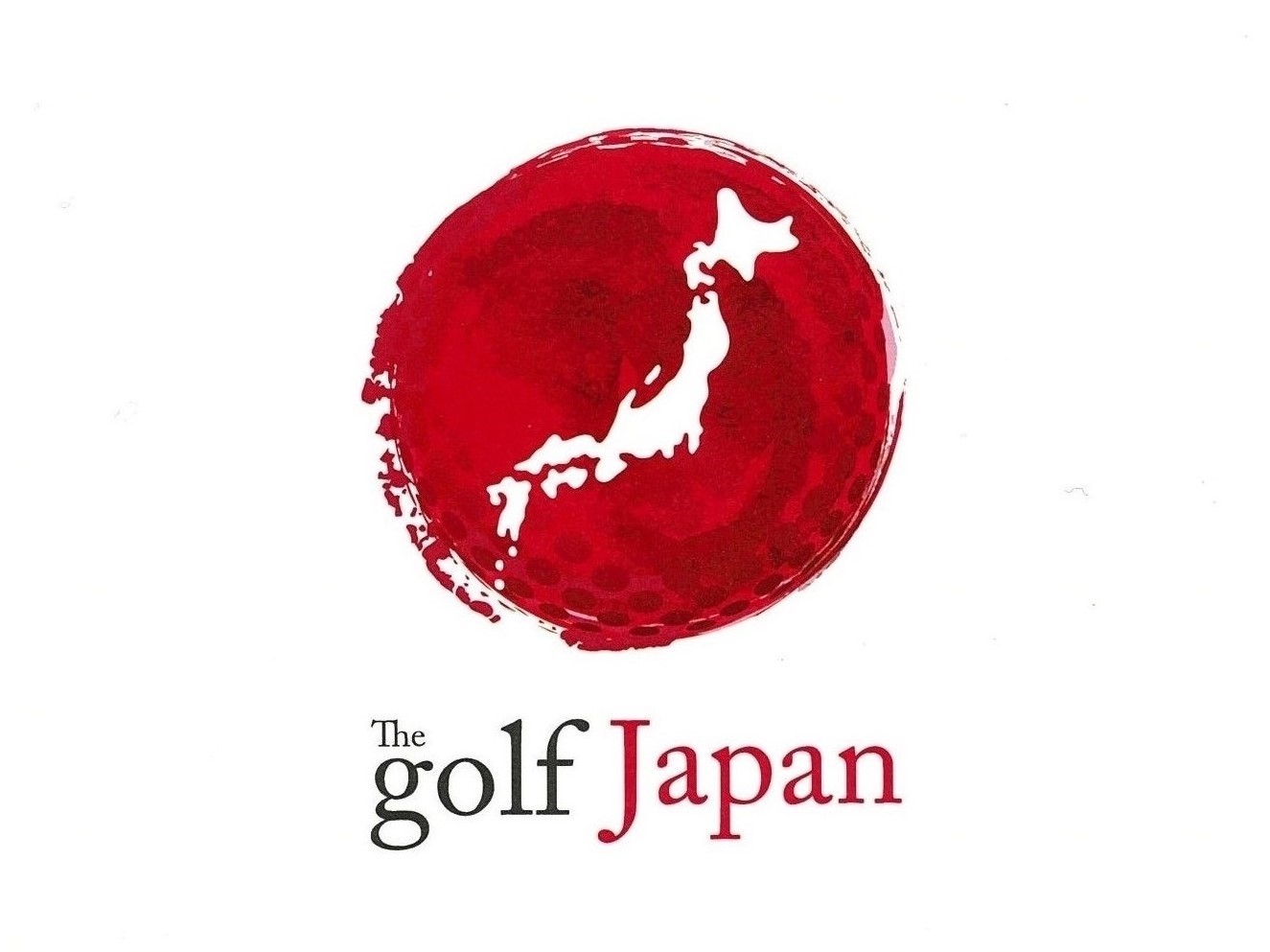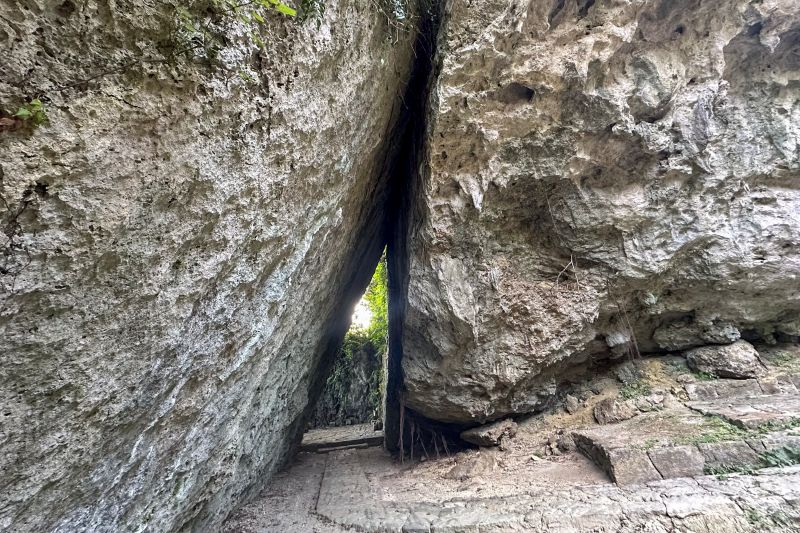I visited the Sefa Utaki located in Nanjo City on the east coast of Okinawa!
What is “Utaki”?
“Utaki” refers to sacred places in Okinawa and the Amami Islands, such as forests, rocks, and hills that have been worshiped for centuries. These places are believed to be where deities reside, and they have been used for prayers and rituals since ancient times.
In traditional Ryukyuan (Okinawan) religion, it is believed that gods exist in nature, and utaki are deeply connected to people’s lives. Some utaki are considered so sacred that ordinary people are not allowed to enter them. Rituals are mainly performed by female priestesses called “Noro,” a system that was officially recognized by the Ryukyu Kingdom government.
What is Sefa Utaki?
Sefa Utaki, located in Nanjo City, Okinawa, is one of the most sacred utaki in Okinawa and was considered the most important spiritual site of the Ryukyu Kingdom. The name “Sefa” means “highest” or “supreme,” and “Utaki” means “sacred place,” so it translates to “the supreme sacred site.”
It was a place where Ryukyuan royalty prayed for the prosperity of the kingdom. One of its most important ceremonies was the enthronement of the “Kikoe Ōgimi” (the highest-ranking female priestess), who was often the king’s sister. The site is famous for its mystical rock formations, creating an awe-inspiring atmosphere.
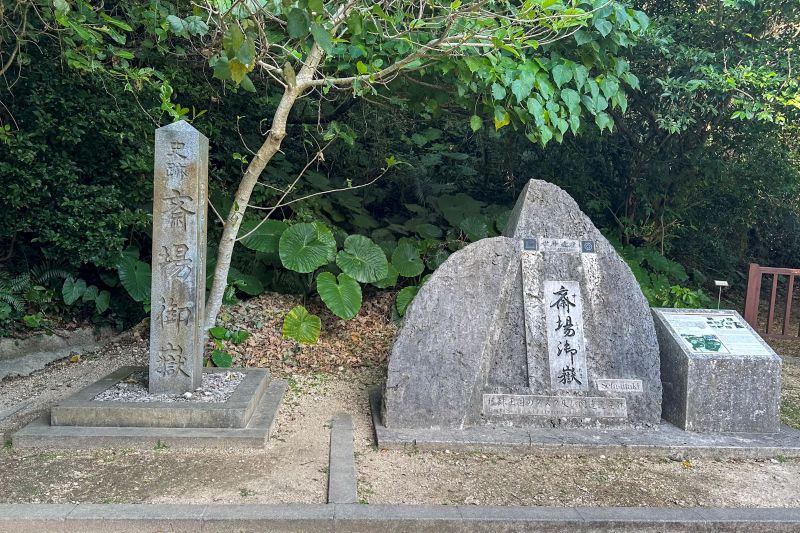
Now let’s actually visit there!
Admission tickets can be purchased at the Nanjo City Regional Products Center, located about 5-10 minutes walk from Sefa Utaki (I arrived there in 7 minutes on foot). Please note that admission tickets cannot be purchased at Sefa Utaki.
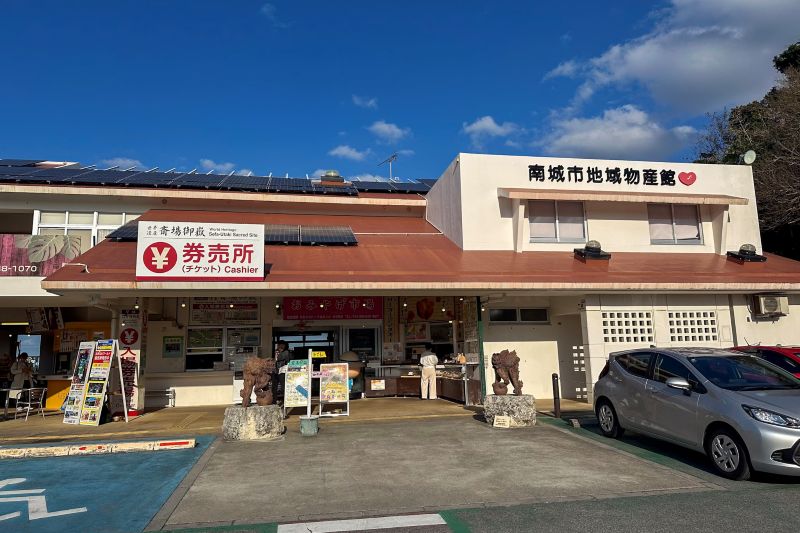
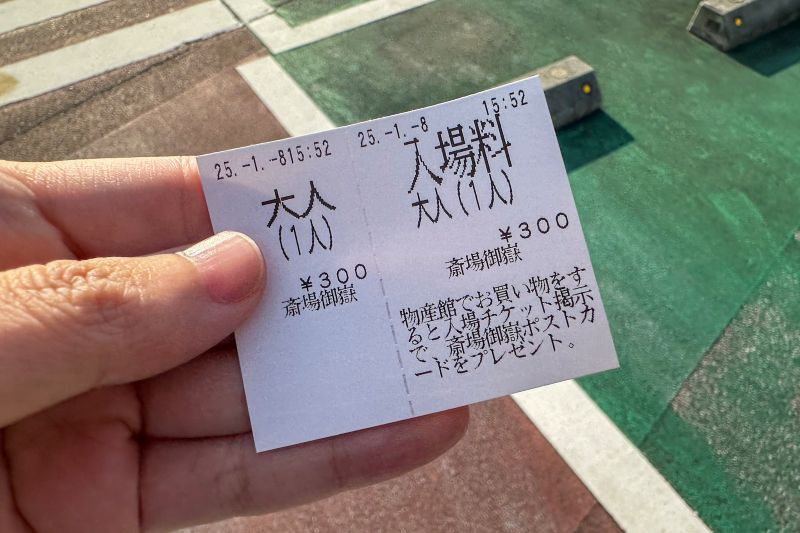
A staff member was standing in front of the road leading to Sefa Utaki, so we were able to get there without getting lost. You will be given an entrance ticket at the reception desk (Green Hall, Sefa). Before walking around the Utaki, we watched a short video about Sefa Utaki.
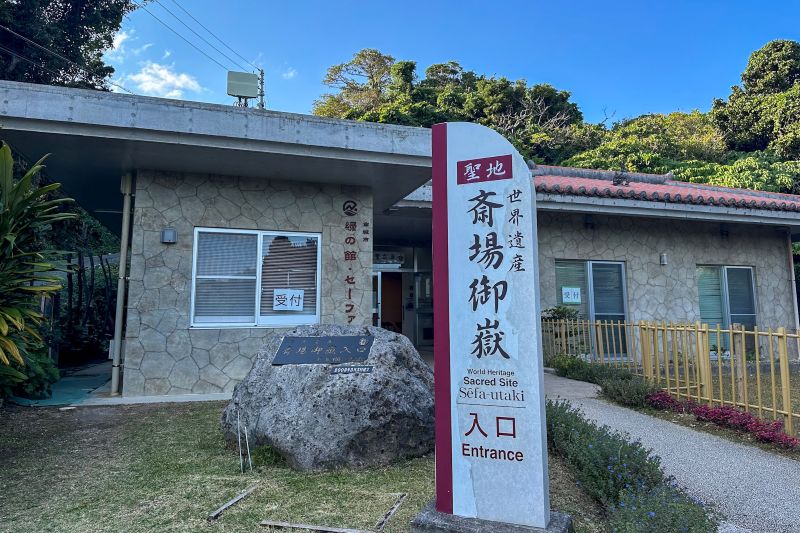
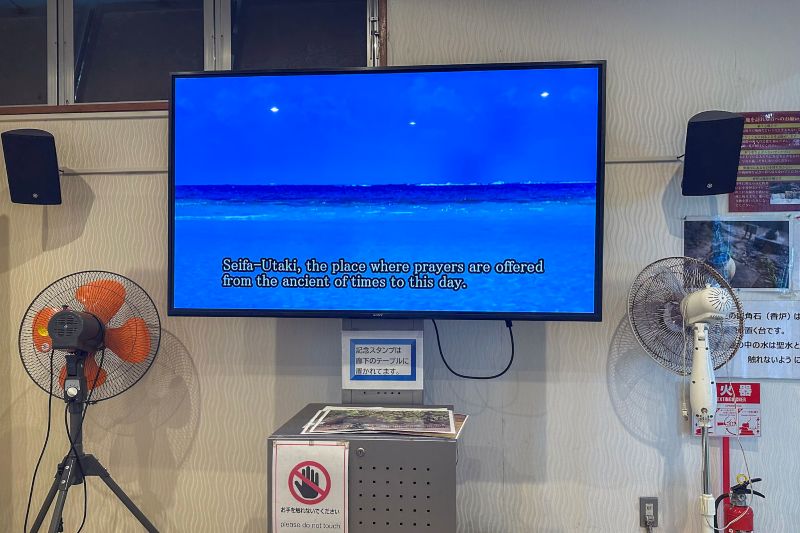
As we began our stroll, we soon came upon a spot where we could see Kudaka Island in the distance.
Kudaka Island is said to be the “Island of God” where Amamikyo, who is believed to have created Ryukyu, descended from the heavens and first built the island. Successive kings of the Ryukyu Kingdom made a pilgrimage to the island once every two years until the 17th century.
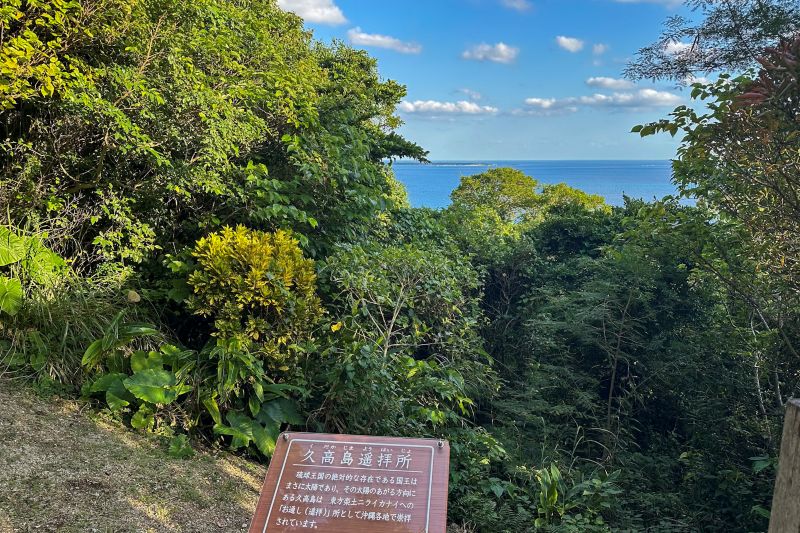
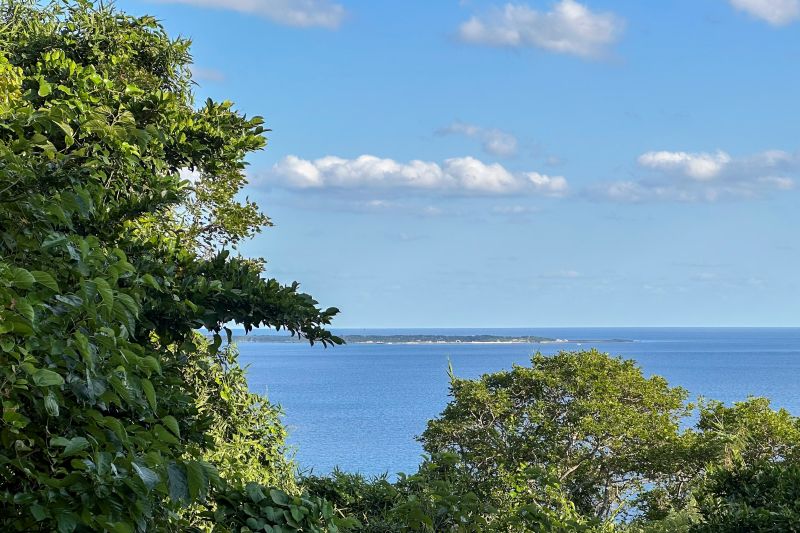
Sefa Utaki has six “ibi” (sacred areas). The “ibi” are sacred places in Ryukyu where prayers are offered. To get there, you will pass through Ujoguchi. There is a steep slope, so be careful with your footing!
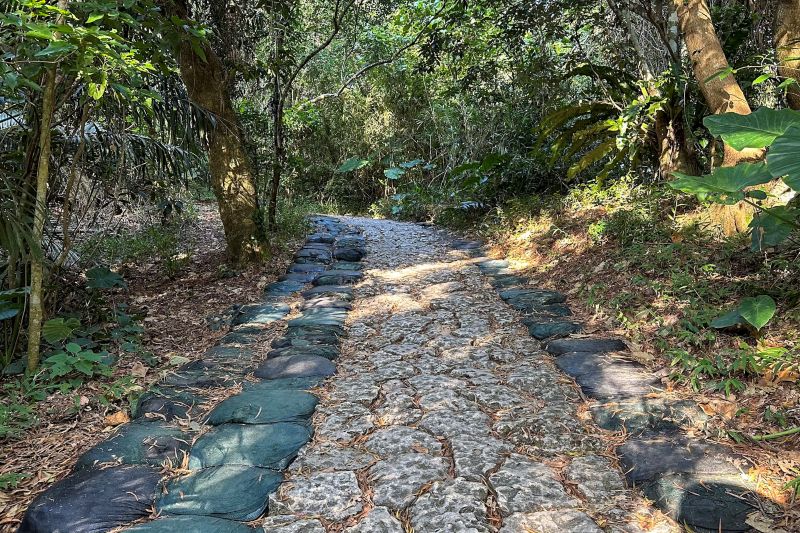
Ufugui (Main Hall)
It is the first place of worship on the left as you walk up the Gomon Gate entrance. Ufugui means “large hall. It is one of the most sacred spaces in Sefa Utaki where the Kikoe-ookimi (the highest priestess of the Ryukyu Kingdom) performed ceremonies.
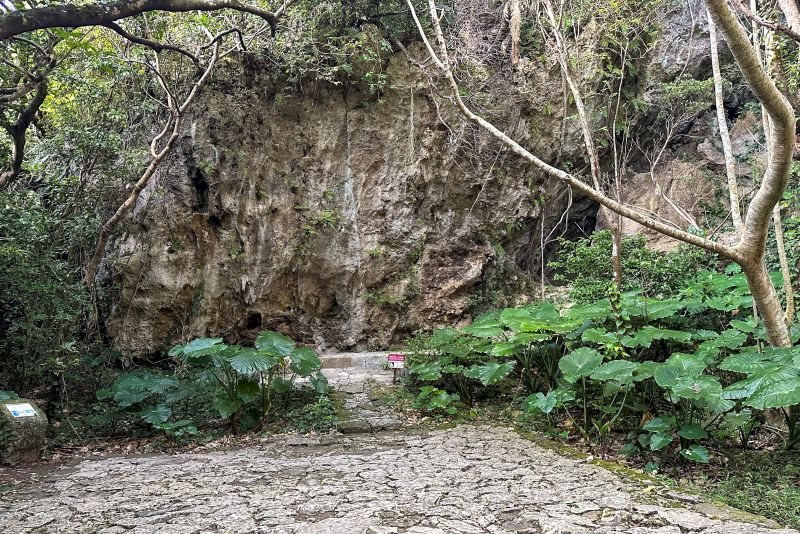
Yuinchi (Place of Abundance)
Yuinchi, meaning “kitchen,” does not mean that people actually cooked here, but rather that it symbolized the “affluence” of the Ryukyu Islands at a time when trade was thriving.
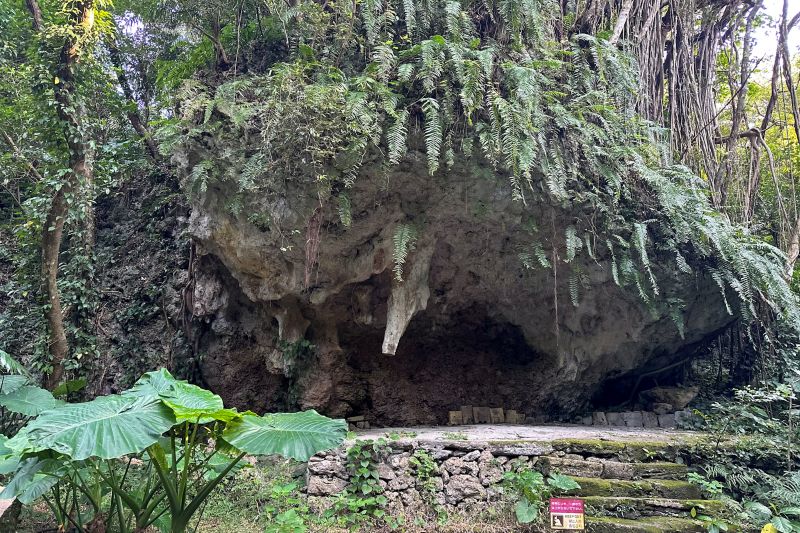
Shikiyodayuru & Amadayuru Pots
Two jars placed to receive “holy water” dripping from stalactites. The water collected on rainy days was considered sacred and used in ceremonies.
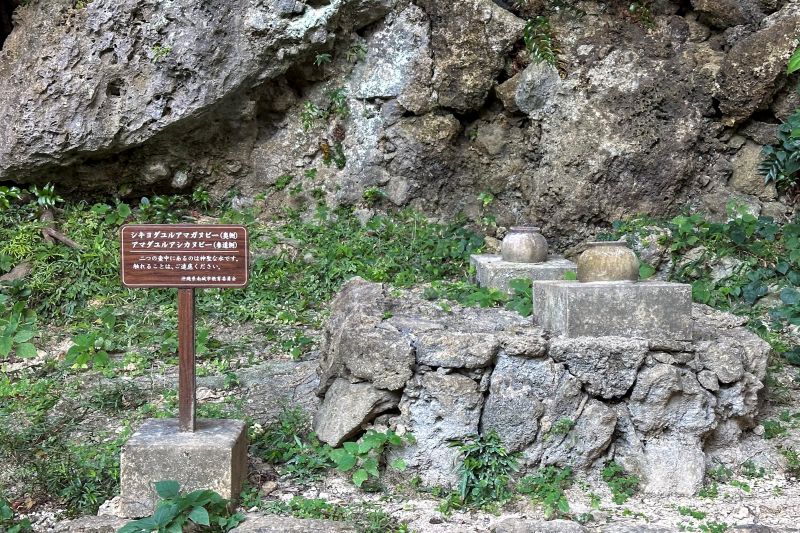
Sangui (Sacred Triangle Rock Formation) & Chou-no-hana (Final Worship Site)
Sangui is the most famous spot in Sefa-utaki, with three large rocks forming a triangle. At the end of the triangular space, on the right side is a place of worship called Chou-no-hana. Sangui, which used to be accessible, is now off-limits for safety reasons due to the danger of the rocks collapsing.

Aminism (belief in spirits) has existed in mainland Japan since ancient times, and it is believed to have developed into Shintoism from there. Shinto believes in the existence of all kinds of deities, including the spirits of nature and ancestors, and enshrines these deities in visible forms such as shrines.
What I learned from my visit to Sefa Utaki is that, although based on Aminism, the beliefs and ways of praying are different from those of Shintoism. The place where the gods reside is prayed to without human intervention as much as possible, and there is no set way of praying.
Actually, at first I had the impression that it was “a place with many rocks,” but gradually I felt that it was a very important place for the Ryukyu region, a place with an indescribably sacred atmosphere. I guess that is the reason why it was registered as a World Heritage site as one of the “Gusuku Sites and Related Properties of the Kingdom of Ryukyu”.
If you have a chance, please visit and feel this sacredness!
Sefa Utaki
| Address | 453 Kudeken, Chinen, Nanjo city, OKINAWA |
| TEL | 098-948-4660 (Nanjo-city Tourism Association) |
| Open Hour | 【Mar. – Oct.】9:00-18:00 (Final Ticket Sales 17:15 / Last Admission 17:30) 【Nov. – Feb.】9:00-17:30 (Final Ticket Sales 16:45 / Last Admission 17:00) |
| Close | 【2025】May 27 – May 29 / Nov. 20 – Nov. 22 【2026】Jun. 15 – Jun. 17 / Nov. 9 – Nov. 11 【2027】Jun. 5 – Jun. 7 / Oct. 29 – Oct. 31 |
| Admission Fee | 【Adults(16 and up)】300円 【Students(7~15yrs)】150円 ** Free for Children(0~6yrs) |
| Website | https://okinawa-nanjo.jp/sefa/ |
